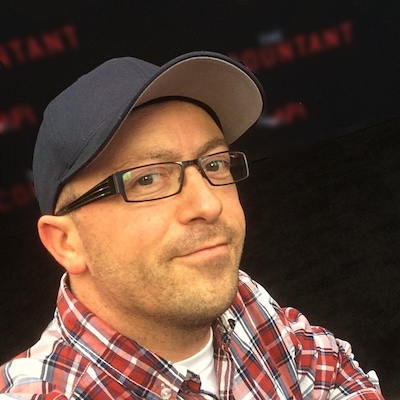“Wicked” Cinematographer Alice Brooks on Casting a Magical Light Over This Dazzling Adaptation
Embracing Old Hollywood and a plethora of source material, cinematographer Alice Brooks knew her Wicked vision for Oz would be rich and luxurious.
Wicked is a prequel to The Wizard of Oz, inspired by the long-running stage show based on Gregory Maguire’s 1995 novel. It stars Cynthia Erivo as Elphaba, a misunderstood green-skinned woman. She finds an unusual kinship with Ariana Grande’s popular girl, Glinda. When their paths lead them to the Wonderful Wizard of Oz, their friendship is severely tested, and what’s to come when Dorothy eventually arrives in Oz is just hinted at.
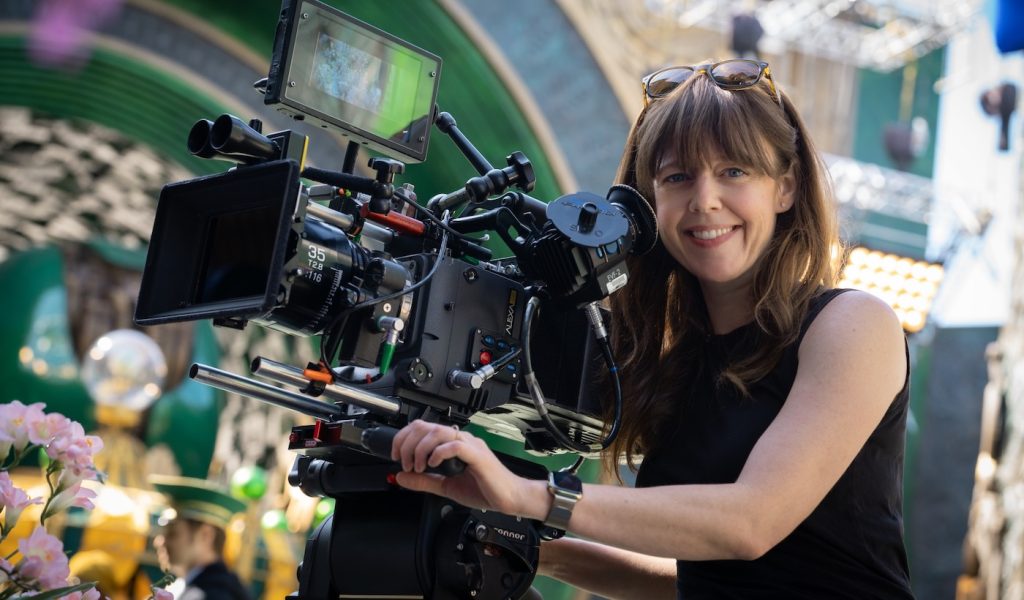
Here Brooks, a longtime collaborator with director Jon M. Chu, lays out how she plays with light and scale to ensure the epic love story dazzles and never loses any of the intricate details.
You’re a frequent collaborator with Jon M Chu. How do you complement and challenge each other?
Jon and I have known each other for 25 years. We met in film school and were just two kids who wanted to grow up and make musicals. Jon has always believed in me; having a champion and someone you can trust in this business is so important. We do challenge each other. When I say, ‘We really should be doing it this way,’ he listens. Sometimes, he goes, ‘No, we should be doing it this way, and this is why.’ There’s a scene after the OzDust Ball where Elphaba and Glinda sit on Elphaba’s bed. During prep, we discussed that we’d shoot toward the window. I’m standing behind them as they’re sitting in the bed, looking out with the deep space of the room, and he looks at me and keeps walking the scene, then he’s like, ‘Okay, and the camera is going to go where Alice is.’ He knows when I’m standing somewhere, it’s because I’m suggesting something. We have this silent communication.
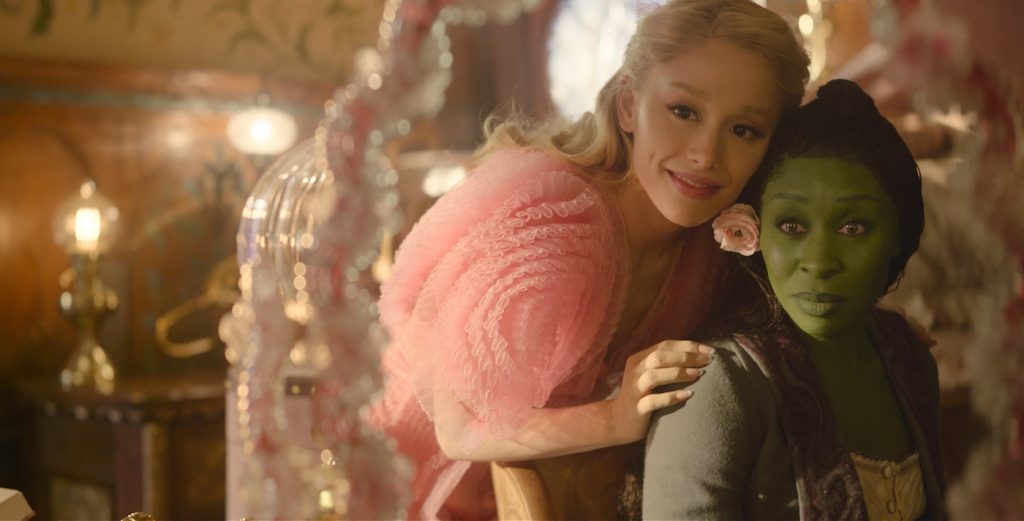
What were the first parts of this massive adaptation to the hugely popular musical you wanted to tackle?
The heart of the movie is the OzDust. When Jon and I first talked, he asked me what my goal was, and I said it would be the greatest love story ever told between these two women, two best friends, and the OzDust is where Glenda and Elphaba fall in love. They really see each other for the first time, and kindness happens. If we got that right, the whole movie would work. There’s a theme throughout the film: ‘What does it feel like to be looked at?’ In one scene, Elphaba comes down the stairs, and everyone’s looking at her. Jon wanted to bring her down the stairs, have everyone laughing at her, and then do a 360 Steadicam shot all in one. It was ten minutes long, but he wanted her to feel everything. It ends with this one tear dripping down Elphaba’s face. We needed to be in the space with the camera and have the right lighting for that moment to happen.
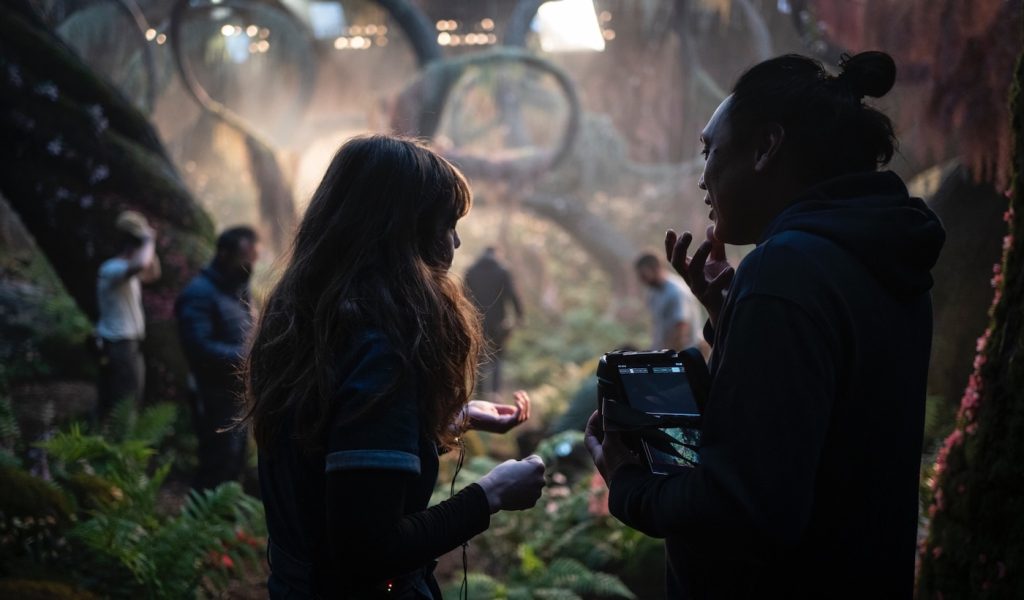
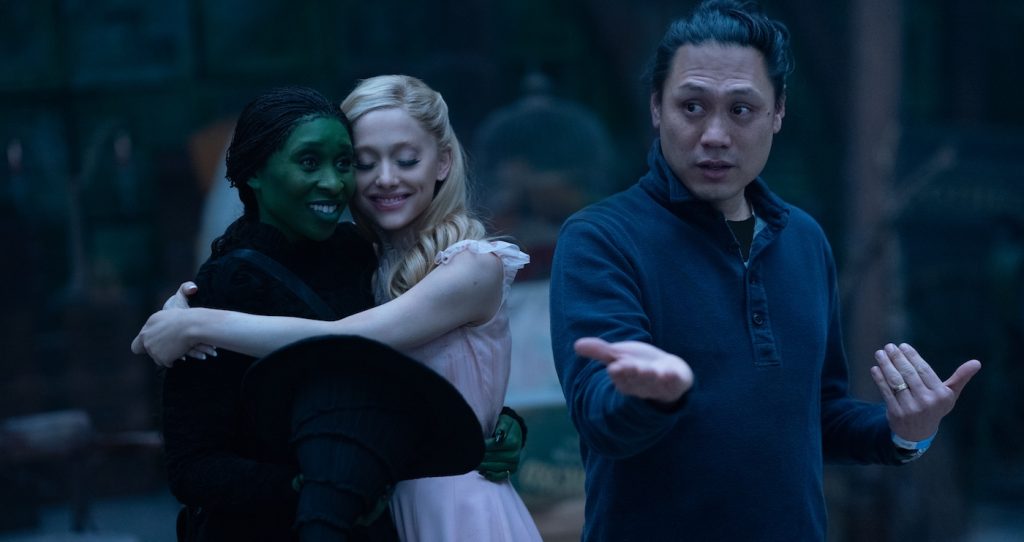
Jon has referred to Wicked as paying homage to Old Hollywood, but it also has to be authentic and contemporary. How did you find the balance?
The lighting was a big part. We wanted an Old Hollywood feel, including building massive sets that don’t often exist in Hollywood. There were 17 sound stages, and the sets were built wall to wall and floor to ceiling. I had tangible spaces to light instead of relying on visual effects. We used contemporary lighting cues to draw emotion. We have thousands and thousands of lighting cues in Wicked that are all very subtle, but from a camera standpoint, that was one thing we had to do to make it feel contemporary.
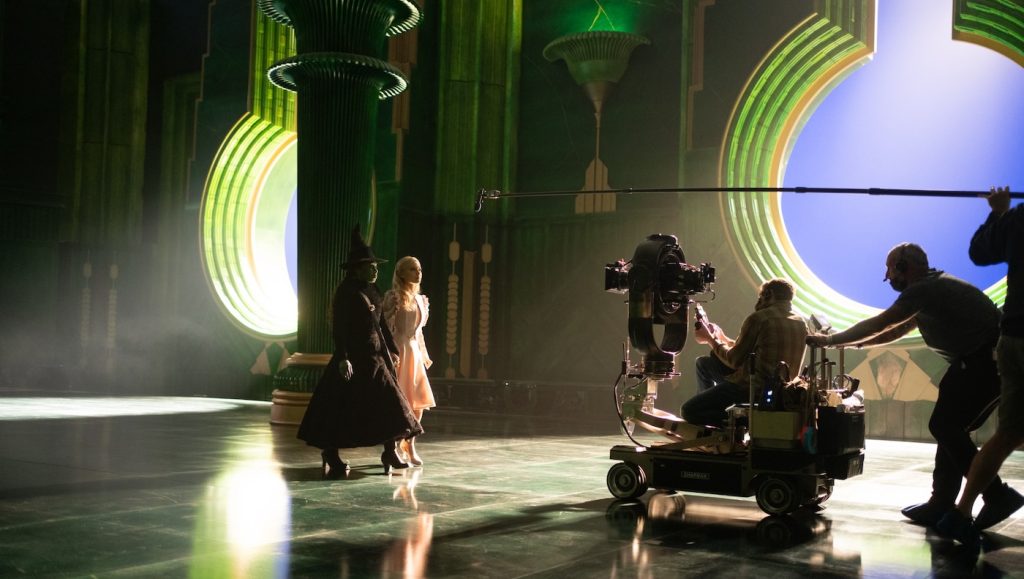
You draw from the stage show and The Wizard of Oz. What other things did you look to for inspiration?
I read L. Frank Baum’s original Wizard of Oz books; every paragraph has a very rich color description. I realized we had the opportunity to create our own 2024 version of what Technicolor was. We lit the movie with all the colors of the rainbow. You can see little moments where we lit red or blue or orange and yellow, and it’s subtle, but it’s there. In the book, there’s all this nature, and that became this inspiration for production design, costume design, and lighting, and that’s where I realized the sun could become our spotlight. I had this revelation and asked Jon, ‘Can I propose all these different time of day changes for the script? I have this idea where the sun rises for Glinda and sets for Elphaba.’ Because of that, you’ve got these long sequences, starting in the early morning and going dark, and the sun rises until Glinda walks up. There’s a huge pink sunrise behind her, so the sun becomes her spotlight. In Defying Gravity, it’s the opposite. It’s a 40-minute-long sunset, which starts in Wizomania. It goes through the Throne Room, the Balloon Room, and the Darkened Room in the lower attic, all the way up, and as she finds her power, Elphaba jumps off the building and descends into darkness. It gets darker and darker from there until she flies off as the sun finally sets.
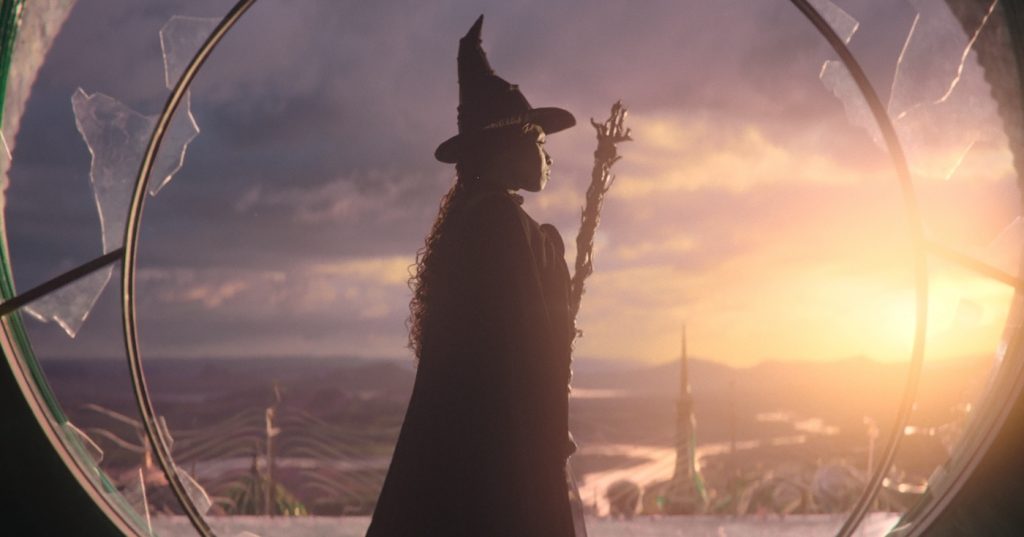
You filmed this in London. How did you bring local vendors into what you were doing with Wicked?
The craftspeople in the UK are phenomenal. We had a Camera Operator called Karsten Jacobsen. He picked up a Steadicam when he was 18 years old because he was working as a PA on a dance show in Denmark. The Steadicam operator hurt himself, so Karsten just picked the camera up, and he understood dance in a fantastic way. He was on our movie during prep for ten weeks before we started shooting, so he learned all the choreography. He was at every dance rehearsal, coming up with ideas, but also feeling and understanding them. Ariana and Cynthia were there the whole time rehearsing, so he could feel their emotion and how they would start playing the scene. Our Gaffer, David Smith, was brilliant. On day one, he pulled me straight into the Art Department and said, ‘These sets are massive. We’ve got to get to work.’ I started a movie club with the two of them, the Key Grip and my assistant, and we would meet on Wednesday evenings. It was a time when we didn’t talk about Wicked; we’d just watched movies and talked to each other as artists and storytellers. I could get a sense of their esthetics, they could get a sense of mine, and we talked about ideas that had nothing to do with Wicked.
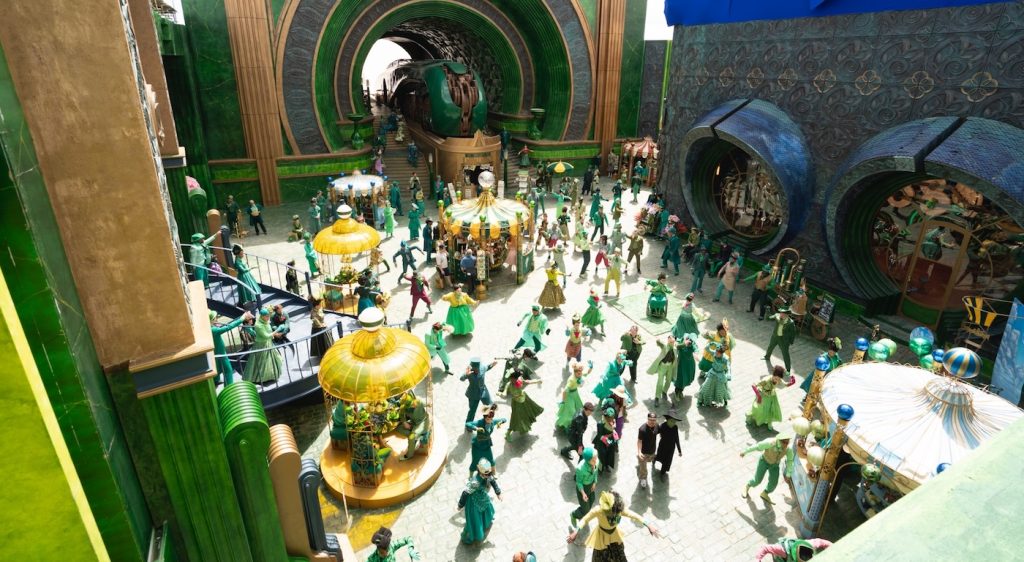
Wicked is a big movie, but some parts rely on the minutia. How did you manage that?
When Jon and I break down a script, we talk about emotional beats, and I usually ask him for one-word descriptions. I was a child actor, so in the same way you would give an actor a beat to play, I want to know the emotional intention in a moment. Sometimes, it changes through the scene, so we have a couple of different beats. It’s a vast, epic movie, but that’s not what it’s about. It’s about these two women, and everything’s in their close-ups. Sometimes, we’d start shooting a scene with their close-ups because that was important. We wanted it to be raw and honest and have all that feeling right there in their close-ups, and then you pull wide. Sometimes, you don’t need to pull as wide as you think you do. We wanted to delight in the world’s scale, but it is all about these two women.
In Wicked, we see the spectacular scale of the world in breadth and depth. How did you use those effectively and not overuse them so that it continues to wow?
Our Shiz and Emerald City sets are each the size of four American football fields, so we had this incredible depth to play with. We also wanted a very shallow depth of field, meaning the background goes out of focus, so you’re just focused on your actors. We made a conscious decision that even though we have all this deep space to shoot, it’s sometimes very soft, and that focuses you in.
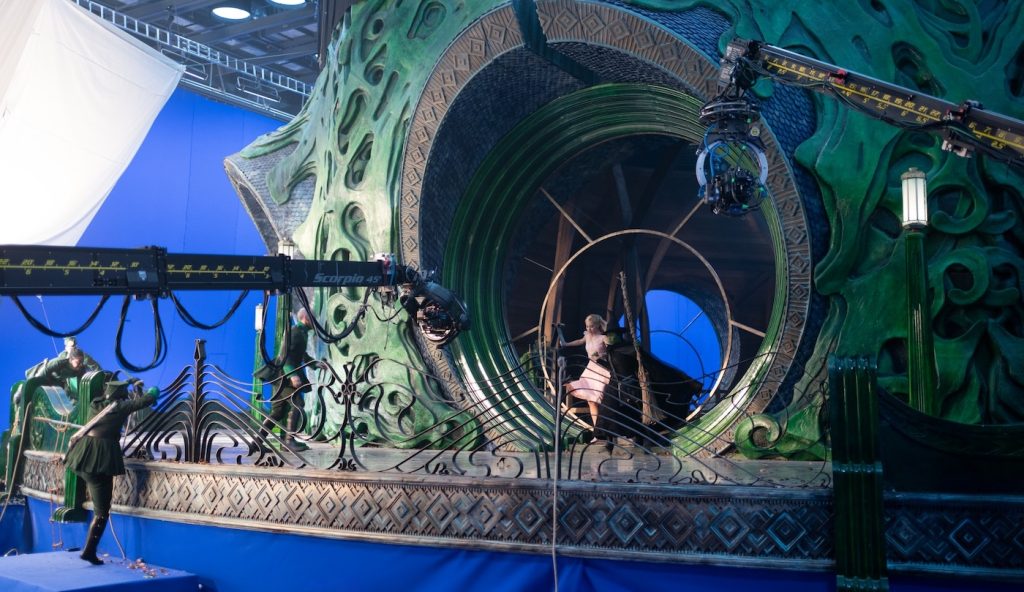
Green is a huge color in this movie. There’s so much green; there’s a specific skill to shooting it, not making it feel flat. How fun was it to utilize and play with that?
It was so much fun. We started camera tests on Elphaba’s green makeup on week two of prep. I started working with our Hair and Makeup Designer, Frances Hannon, doing green tests on a stand-in. Some of my favorite shots of Elphaba are the first time you see her against green, which is in the forest, and the green on green looks fantastic. Then you go to Emerald City, and there’s nothing but green around her. We realized it was a play with color temperature, so if we lit her cooler, then we’d light the environment green warmer to separate her. If we let her in with warm light, then the green in the background, we’d go cooler because it’s painting. We had to paint these sets and the green skin with light. I wanted to see every detail of the fabric on Elphaba’s dress because it’s beautiful, but it’s black, and that can very easily get lost in a movie. I wanted to ensure all that richness, texture, and detail was there, but it was an incredible amount of testing to figure it out.
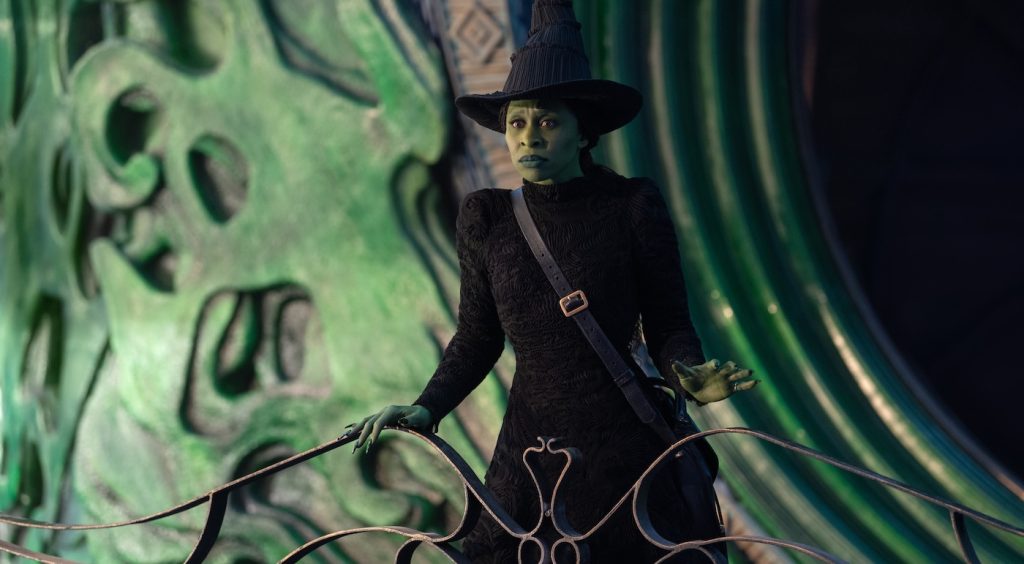
Wicked is in theaters now.
For more on Wicked, check out these stories:
“Wicked” Review Round-Up: Cynthia Erivo & Ariana Grande Dazzle in Mesmerizing Musical
Prepare to Defy Gravity: “Wicked” Will Have Sing-Along Screenings This Christmas
Featured: On the set of Wicked. Courtesy Alice Brooks and Universal Pictures.


